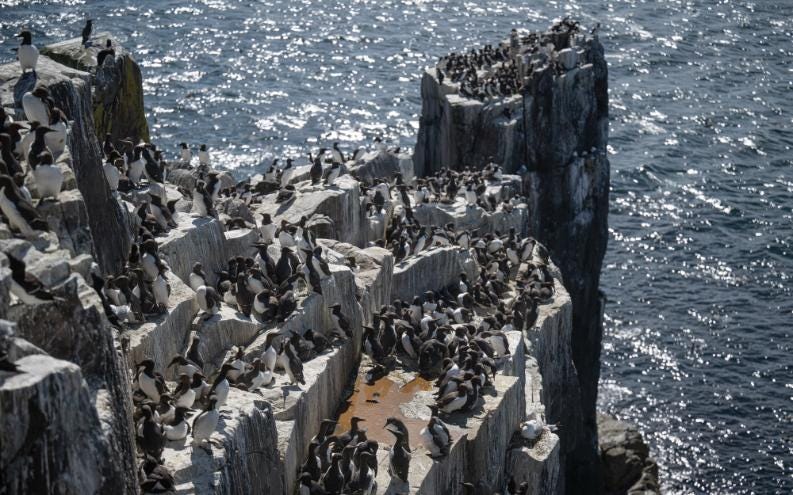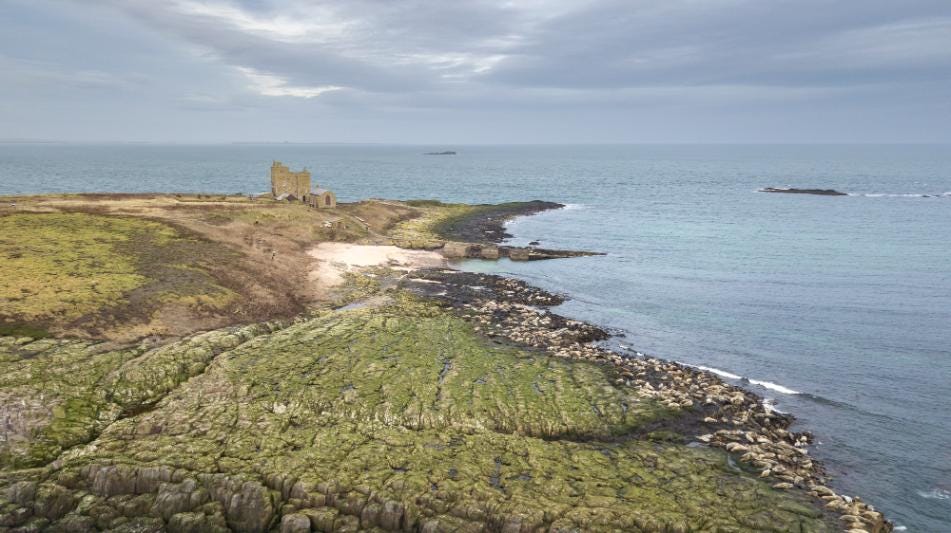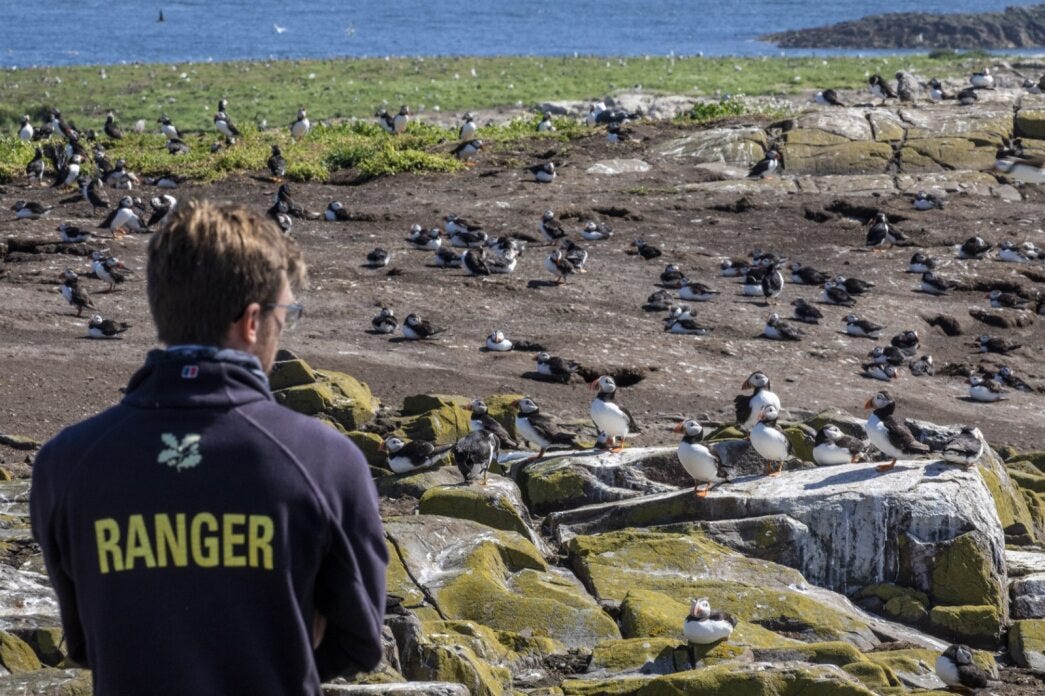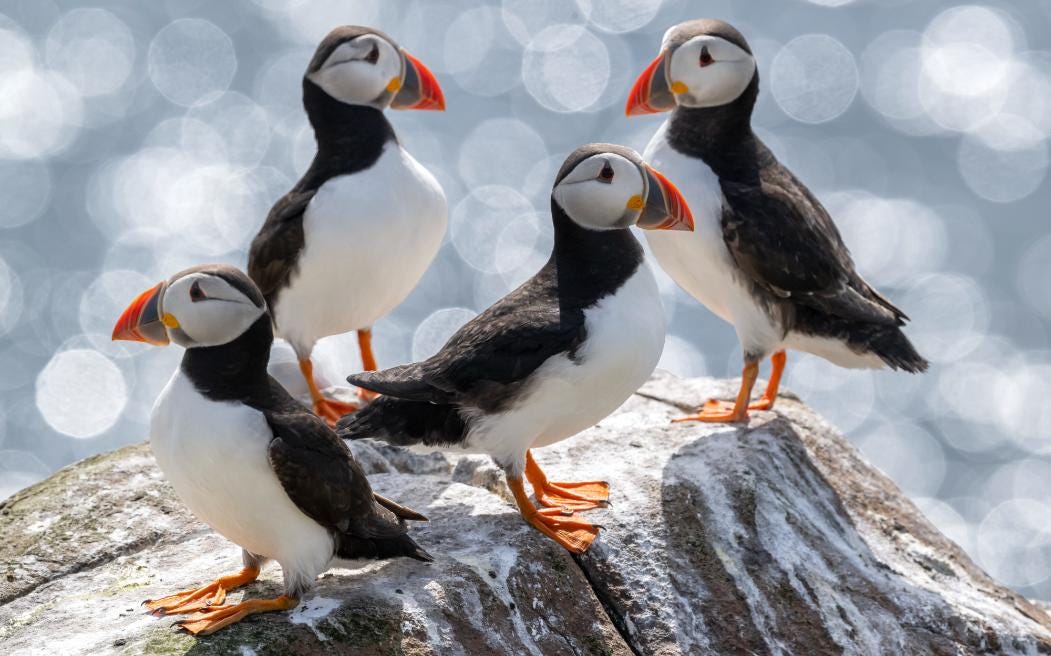A century of important bird watching
National Trust keeps counting as it marks the centenary of ownership of the Farne Islands. Tony Henderson reports
It was a century ago that the National Trust took ownership of the wildlife-rich Farne islands off the Northumberland coast.
Today the trust is using tracking, recording and conservation techniques, such as web cams, which were undreamed of 100 years ago.
The trust took over from the Farne Islands Association on August 10, 1925. The association continued to manage the islands until the trust formally assumed this role in 2000.
The trust began monitoring seabirds in the middle of the last century, and due to the growing numbers and variety of species recorded, the islands were declared a national nature reserve in 1993.
This year’s puffin count is now underway on the Farne Islands, an internationally important sanctuary for the 200,000 seabirds spanning 23 species that return each summer to breed.
This year’s count, alongside recording other seabird numbers, is vitally important given the islands’ three seasons of closure between 2020 and 2024 firstly due to Covid-19, followed by bird flu.
The Farnes team is marking the centenary by introducing a new way to track the birds using coloured rings – the second such project in England.
Tom Hendry, area ranger on the Farne Islands, said: “Despite puffins spending much of their time at sea, ringing them will help us to understand more about the individuals as we’ll be able to follow them over several years, as well as how long they live and how far they travel to other colonies
“Over the next few weeks, we’ll aim to ring 50 adult birds as part of our census and productivity monitoring.
“Reported sightings of these blue colour rings by other rangers from other organisations and the public, will indicate that these adults breed on the Farnes, and are vital for this project.”
Other techniques to better understand the various species have been through ringing and also geolocation tags which were put on some Arctic terns in 2015 and retrieved in 2016.
Area ranger Sophia Jackson said: “In using tracking technology we were able to discover for the first time just how far the Arctic terns travel during their annual migration with distances of up to 70,800 miles recorded – or to put this into context, close to three times around the globe each year which means they witness two summers.
“When you think about what that means over the lifetime of one of these tiny seabirds, it is nothing short of incredible.”
To help mark the 100th anniversary, the conservation charity wants more people to experience the seabird breeding season with two live webcams - one trained on the puffin nesting burrows and the second on the cliff nesting birds.

Sophia said: “In this significant year we want more people to become watchers of this annual spectacle to have a window into this unique world.
“We hope people will be inspired to visit in person one day, but also to realise just how special these wild isles are, and how we must do all we can to ensure the islands and bird species have a long and healthy future ahead.”
The earliest official scientific records for seabirds date from 1913.
“Reports for the majority of returning bird species started in the 1920s thanks to the ‘watchers’ stationed on the islands over the summer period, and in 1939 puffins were particularly noted as increasing,” said Sophia.
“It appears that the increases in bird species aligns with the islands gaining increased environmental protections, firstly through designation as a Site of Special Scientific Interest in 1951 and as a Special Protected Area in 1985.”
Significant milestones include numbers of breeding birds reaching 100,000 for the first time in 1987, with 200,000 individual seabirds returning recorded in 2005. The Farne Islands data is submitted to the British Trust for Ornithology and the Seabird Monitoring Programme for use by researchers and for other studies.
“Looking back on the records for the different populations it is very clear how important regular monitoring of the different seabird populations has been – despite different methodologies - for informing our conservation work on the islands, but also for keeping track of the impacts of climate change through warming seas and more frequent storms,” said Sophia.

“Last year’s counts were particularly important as we had been unable to conduct full counts on the islands since 2019. It was a huge relief to discover that the puffin population was ‘stable’ with 50,000 pairs recorded, but other species were less fortunate with big losses for terns and shags mainly due to bird flu and winter storms.
“Both species have struggled in the last decade due to the weather and declines in fish stocks. Ultimately, they both need time to recover. We can help by keeping their nesting habitats as safe as possible for them to return to in the light of climate change and the increase of extreme weather events.”
The team on the Farnes has been supported in recent years by researchers at Newcastle University. Researcher Dr Chris Redfern said: “Ringing and monitoring by National Trust Rangers has made major contributions to seabird biology over many years.
“Recent analyses of ringing data show how the presence on the islands of National Trust staff and public visitors is an integral part of Farnes seabird conservation and ongoing colour ringing work, particularly of sandwich terns, has contributed to understanding the impact of bird flu on North Sea colonies.
“The geolocation tagging work with Arctic terns has been a particular highlight. The tremendous success of this project was down to the special relationship between people and birds which has made Inner Farne a place where Arctic Terns return year after year to breed.”
Dr Anne Wilson has been the trust’s volunteer archivist for the Farnes since 2005. She first became interested in the islands in 1986 and created the database of bird records that is still used to this day.
She said: “I never expected to be a volunteer on the Farne Islands and have the access I have. A few weeks ago, we had an amazing show of dolphins in the harbour, and I’ve seen basking sharks around the islands, so I’ve been very fortunate.
“However, as well as the highs there have been some lows. Avian flu was just awful, but our rangers did a brilliant job.
“It’s hard to know what the famous bird colonies will be like in 50 or 100 years. Because of rising sea levels and warming seas, we could be seeing an entirely different position on the Farne Islands. When the seas warm, the fish and plankton the birds depend on will migrate further north – and won’t be in sync with the birds’ breeding seasons.
“But, hopefully, after these first 100 years, we can build on what’s been achieved.”
Looking towards the next century Sophia said: “We are doing the best we can to ensure all our seabirds have a bright future. But climate change, especially its impact on the severity of winter storms and extreme weather events are the biggest threats facing both our seabirds and seal populations.
“Summer storms resulting in heavy rain at the wrong time of year can flood puffin burrows on the islands, as well as impacting how the birds fare when on their migrating routes.
“Winter storms can also wash seal pups off the rocks and several pups perished when storm Arwen hit the islands in 2021.
“Warming sea temperatures and the availability of the seabirds’ food sources, as in different sorts of fish moving further northwards to find cooler temperatures, also means that the birds are expending more energy to seek out the food, and also spending more time away from the nest resulting in starvation or abandonment of young chicks.”





